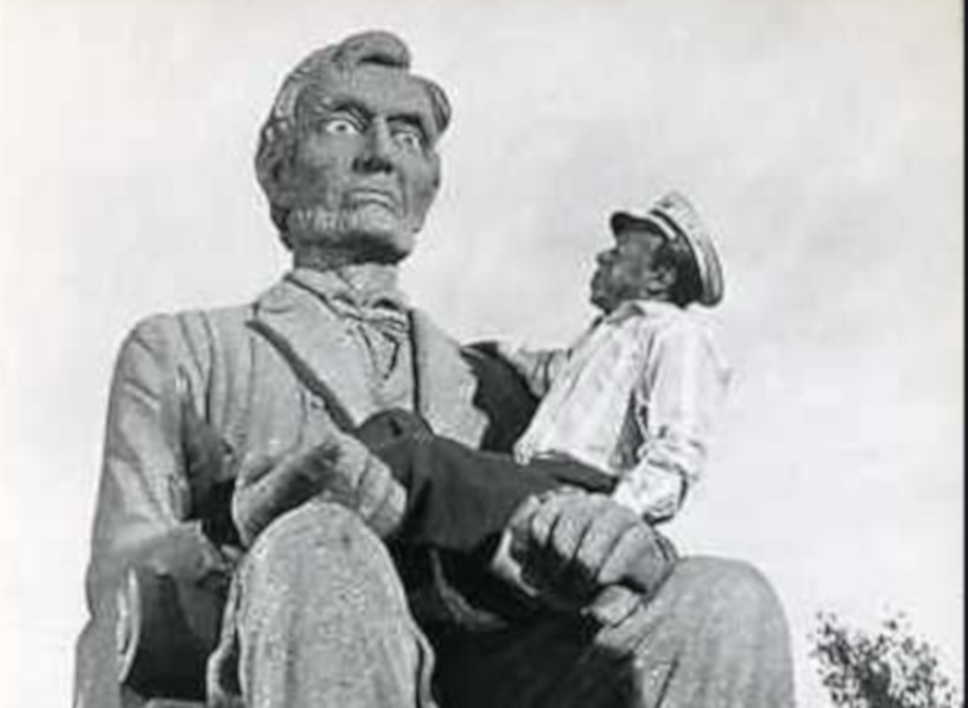UNITED STATES—Let’s tackle from today’s woke perspective what would be called diversity in it’s “A Mad Mad Mad Mad World.” In a way it’s a cynical look at humanity, a story of greed and temporary insanity. And you had these European screen writer’s, an Anglified American and his professional and personal partner (William and Tania Rose) extrapolating from their house in Jersey this Californian saga that unfolds from the high desert to the far southland.
Indeed, you have a group of mostly white New Yorkers among those who are caught in the chase for the loot, and it is the men who go down to the crash site. Berle, Caesar, Buddy Hackett and Mickey Rooney, the blue-collar Mr. Pike (Jonathan Winters).
A doctoral dissertation (Film Comedy and the American Dream, 2017), asserts outright that “It’s a Mad, Mad, Mad, Mad World” increasingly turns into a competition between “white middle-aged” males to cheat their way to an American dream they failed to achieve through honest labor and enterprise.
It is Winter’s truckdriver, Pike, who bristles when Sid Caesar’s dentist mentions the money they find will be tax free: “What do you mean, tax free?! Even businessmen who lie, cheat and steal every day have to pay taxes.”
In real life Jonathan Winters was 1/16th Cherokee and embraced his heritage, though he granted others were more native. Profiling the comic mostly known for stand-up, People magazine in 1976 quoted, “If I had a nosebleed, I’d be out of the tribe.”
Writing almost a decade ago, the discerning eye of Roger Ebert provided this challenging revelation, which must make many a veteran viewer of “It’s a Mad Mad Mad Mad World” think in a new way:
“When the characters do damage to themselves, as when Caesar struggles to extricate himself from the hardware store basement, it is funny because they are only hurting themselves as a result of their bad behavior. However, when their actions hurt innocent bystanders—as it does from time to time—it isn’t quite as funny. In perhaps the most jarring example, an African-American couple, with all their possessions strapped to their rickety old car, is run off the road and we see them hurtle down a long slope while everything they own goes flying away. It is an ugly and dispiriting moment—more so because we are meant to just laugh it off—and it is amazing that of all the things that got cut out of the film over the years, this sequence somehow managed to survive every incarnation.”
The hootenanny fiddle musical accompaniment from Ernest Gold’s Oscar-winning score serves to embed the sequence. In interviews, Stanley Kramer himself how comedy, and slapstick particularly, has a way of taking humans out of the doldrums and making us laugh at others’ pain.
It is the explosive finale of the hardware store basement, with spilling domino shelves of paint cans and ammunition crossfire, punctuated by a huge dynamite blast that allows Sid Cesar and wife Edie Adams (a couple on their second honeymoon) to escape the basement of the hardware store, via a Chinese laundry manned by suitably ruffled Chinese.
Stereotypical typecasting, but nevertheless a moment in the limelight for Tommy Tong and other players.
In terms of the female characters, Mad World boasts sweet Dorothy Provine (only 26) as wife to Berle’s neurotic, pill-popping J. Russell Finch; Edie Adams offers a halting skepticism when it comes to her dentist husband’s growing lunacy and fanaticism in the chase to reach buried treasure.
Zachary A. Sands, the author of the “Film Comedy and the American Dream,” offers this observation that serves to sum up diversity in this film: “Women in this movie are commonly portrayed as nagging harpies, and the only African-American actors who even appear in this film are driven off the road by the main characters for the sake of cheap laughs or are thrown into the arms of a visibly surprised statue of Abraham Lincoln at the end of the movie.”
To be continued…






